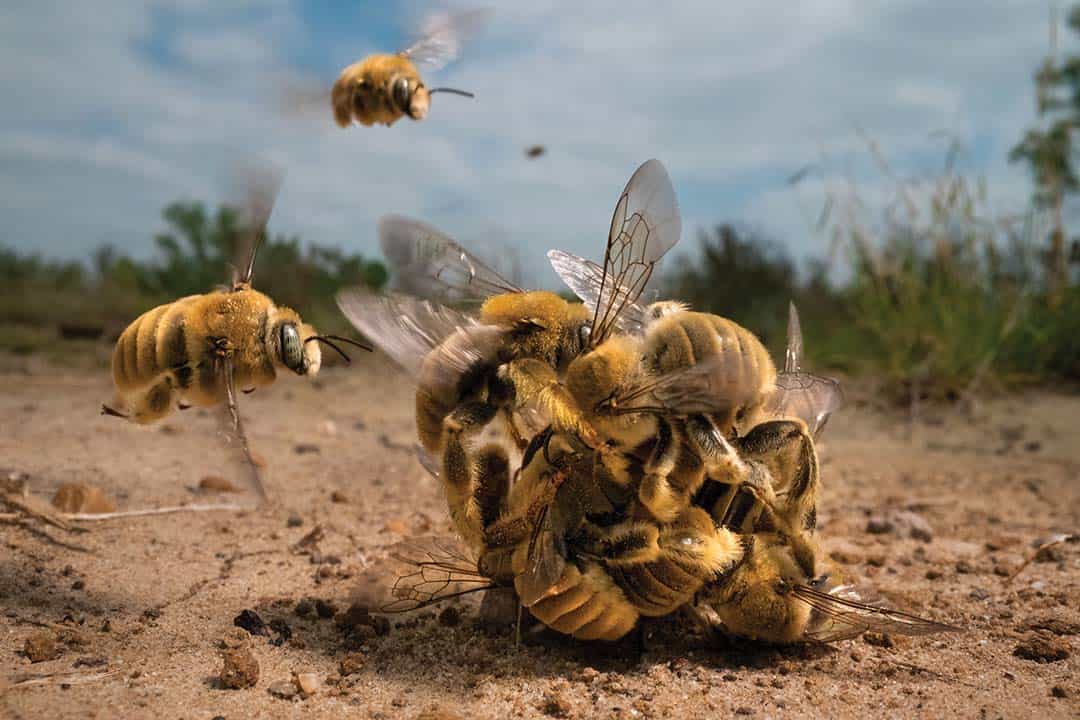What is the purpose of a portrait? They’re usually not particularly complex. Many of them, especially when made in a certain style, are rather similar. And yet portraiture is a popular genre, as evidenced by classical paintings, magazine covers, and, as it turns out, the Wildlife Photographer of the Year competition.
I’ve made it a point to attend the Royal Ontario Museum (ROM)’s exhibition of the contest since I was a teenager. I love walking through the dim rooms, observing in silenced awe as the beauty of nature and human creation collide to create something that is, undeniably, real.
But, admittedly, I’ve always found the animal portraits category a little odd. Most of the exhibition’s photos are more documentary; they bear witness to the beauty of nature and its destruction. According to the ROM, part of the exhibition’s purpose is to advocate for environmental protection.
Besides the photojournalism category of the contest, the animal portrait category feels most pointedly like a call to action. Do you understand that every living being has its own will to not only survive but also exist with some level of agency? Do you see the potential these lives hold, the ways in which they make our world better, stronger? Now, can you finally conceptualize the full scale of loss that environmental destruction has caused? The portrait, as a form, turns its focal point into a subject. It’s difficult to look at any living being dead on and not try to imagine what lies behind its eyes.
If being forced to confront the subjectivity of animals simultaneously feels foreign and makes me uncomfortable, it’s only because our culture — or, to be more exact, capitalist culture — has imposed a very specific view of the relationship between humans and the natural world upon me. There is an element of a god complex present in that view — we are entitled to animal bodies. We can consume them, use them, and move them however we want. The truth is that we will exert force upon animal bodies if it suits our needs, and then we’ll create the criteria for a hierarchy that justifies that violence.
This reduction of bodies to exploitable entities is part of a worldview that permits the pillaging of the earth and everything it has to offer — whether it be plants, animals, or human beings — to their very core. And it is a worldview that ignores how its pillaging destroys and displaces the bodies that it has used and discarded. For an exhibition that claims to confront the realities of environmental destruction, something is markedly absent from the photos it contains: people.
You might think there’s an obvious reason for this — it is a wildlife photography competition, after all. And yet the animal portrait section asks us to question the separation of human and animal. If the portrait asks me to consider the subjective experiences of animals and treat them as I would human experiences, then I shouldn’t be uncomfortable putting those animals in the same contexts as human beings.
But, in reality, we think about animals very differently, even when staring one dead in the eyes. If you don’t think about it too hard, your subjectivity is just detached enough from an animal’s that seeing such a photo might arouse pity, but not empathy. We can turn an animal into a martyr — an innocent victim whose life is just different enough from ours that we can feel bad without truly feeling guilty.
Perhaps the exhibition doesn’t showcase the effects of environmental destruction on humans because that’s a little too close. Portraits that represent humans harmed by environmental destruction are harder to separate from ourselves — we understand that their lives might be or could be like our own. The subject becomes more ‘political.’ No longer is the exhibition an ode to the beauty of nature — now, it’s tainted by global politics, economics, and inequalities.
But if an animal deserves to be treated as our equal, surely human beings do as well. The answer, in my opinion, is not to denounce art projects such as these animal portraits for taking focus away from human suffering. Instead, it’s for these projects to take this kind of proposition to its natural conclusion — if wildlife is less separate from us than we think, then we are also part of wildlife, and an ethical representation of environmental destruction would include its effects on human beings. And as audience members, we need to approach this kind of art ready to engage with its focal points as subjective actors, and shift away from a view that exploits them by default.


